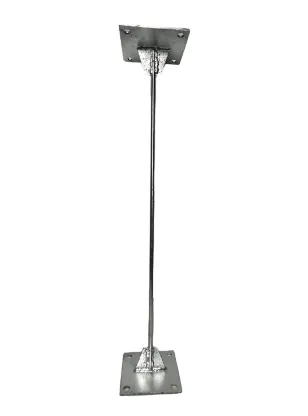loading...
- No. 9, Xingyuan South Street, Dongwaihuan Road, Zaoqiang County, Hengshui, Hebei, China
- admin@zjcomposites.com
- +86 15097380338
- Welcome to visit our website!
Exploring the Cost Trends of Fiberglass Rebar for Construction Projects and Applications
Understanding Fiberglass Rebar Prices A Comprehensive Overview
In recent years, fiberglass rebar has emerged as a popular alternative to traditional steel rebar in construction projects, noted for its unique properties and advantages. As more builders and engineers recognize its benefits, understanding the pricing of fiberglass rebar has become essential for making informed decisions in construction budgeting and project planning.
What is Fiberglass Rebar?
Fiberglass rebar, often referred to as GFRP (Glass Fiber Reinforced Polymer) rebar, is a composite material made from a polymer matrix reinforced with glass fibers. This innovative product offers several advantages over conventional steel rebar, which includes corrosion resistance, lightweight properties, and a non-conductive nature. These benefits make fiberglass rebar particularly appealing for projects in harsh environments, such as marine and chemical processing facilities, where traditional steel may corrode rapidly.
Factors Influencing Fiberglass Rebar Prices
The price of fiberglass rebar can vary widely based on several key factors
1. Material Composition The quality and type of materials used in the production of fiberglass rebar significantly affect its price. Higher-grade fibers and resins increase durability and strength but also raise manufacturing costs.
2. Production Volume Manufacturers often offer bulk pricing discounts. Large orders can lead to lower per-unit costs, making it important for buyers to assess their needs accurately before making a purchase.
3. Market Demand Prices can fluctuate based on supply and demand dynamics in the construction market. During economic booms, with increased construction activities, prices may rise due to higher demand for innovative materials.
fiberglass rebar price

4. Geographical Location The availability of fiberglass rebar in different regions can impact pricing. Transportation costs can also play a role, particularly if the product must be shipped over long distances.
5. Technological Innovations Advances in manufacturing technology can lead to more cost-effective production methods, potentially reducing prices. As the industry evolves, new techniques may emerge that influence the cost structure of fiberglass rebar.
Current Pricing Trends
As of 2023, the price range for fiberglass rebar is generally between $0.50 to $3.00 per linear foot, depending on the factors outlined above. This pricing may appear higher than traditional steel rebar, which averages around $0.20 to $0.50 per linear foot. However, it is essential to consider the long-term savings that fiberglass rebar can offer due to its lower maintenance costs and extended lifespan in corrosive environments.
Cost-Benefit Analysis
When assessing whether to use fiberglass rebar over steel, it’s crucial to conduct a thorough cost-benefit analysis. While the initial investment for fiberglass rebar is higher, its advantages, such as reduced weight (which can lower shipping and handling costs), resistance to corrosion, and lack of magnetic properties, may justify the expense in specific applications.
For example, projects in coastal areas often face significant corrosion challenges with steel, leading to increased repair and replacement costs over time. In such scenarios, selecting fiberglass rebar may prove to be more economical in the long run.
Conclusion
Understanding fiberglass rebar prices requires knowledge of the various factors that influence them. While the upfront costs may be higher than traditional options, the long-term benefits it offers should not be overlooked. As the construction industry continues to evolve, embracing innovative materials like fiberglass rebar can lead to more resilient structures and potentially lower overall project costs. As demand for sustainable and durable construction materials grows, fiberglass rebar will likely see a steady increase in adoption, altering the landscape of construction materials and their pricing structures in the coming years.
-
Premium FRP Handrail for All ApplicationsNewsAug.29,2025
-
Low Maintenance FRP Mini Mesh Grating ProductsNewsAug.29,2025
-
Innovative FRP Square Tubes for Modern Industrial SolutionsNewsAug.29,2025
-
FRP Water Storage Tanks Wholesale Solutions for Bulk BuyersNewsAug.29,2025
-
FRP Molded Grating Solutions for Diverse Industrial ApplicationsNewsAug.29,2025
-
Construction Advancements Through FRP Pultruded ProfilesNewsAug.29,2025
-
Why Choose FRP Railings, Guardrails, and Handrail Systems?NewsAug.29,2025
